
Back in 1983 the videogame market was thriving and home videogame systems were selling like hot cakes. Arcades all over the country were filled with kids and young adults alike. A few software companies and videogame developers had the idea to implement Laserdic technology and apply it to the field of videogames, the result was an influx of laserdisc based cabinets invading arcades all over the US and Japan. In some cases, the graphics were insanely better than the average arcade game and you could see actual actors incorporated in the game or control cartoon characters as they did whatever you made them do with the controller. This was a revolutionary idea back in the days...imagine coming to the arcade to play Gyruss and you see the Bega's Battle or Dragon's Lair cabinet off in the distance. Which direction would you walk in?

Later on another game called M.A.C.H 3 (cabinet pictured above) developed by Mylstar dropped. You could play as a fighter or a bomber and you flew over real landscapes shooting shit up. That blew the door off of the other videogames you saw in the arcade. Other games like Astron Belt and Cube Quest also created lines and drew gawkers at arcades even though they went for 50¢ a play. Remember that back then comic book went for between 30-35¢ and paying double to play an arcade game was a bold move. The problem was that these games were often tough to beat and you couldn’t beat them on one play. A lot of times they got abandoned due to those factors.

In the case of Dragon’s Lair, if you watched the game played enough or played it yourself you ended up memorizing the sequence of moves well enough to be able to make it fairly far in the game. It would cost you hella tokens to get just halfway through in most occasions. Don Bluth’s completely original animation drew in the gamers and the casual viewers and attracted people to the arcade that weren’t even gaming fans. The game was also pretty quick and responsive which made it that much more popular. Software developers and videogame companies began to think that laserdisc games were the wave of the future and began trying to break into the market themselves. The three biggest developers of laserdisc based games were Mylstar, Stern Electronics and Cinematronics.

All of these games were powered by the original clunky ass Pioneer LD-V1000 or PR-7820 players (pictured above) and they also had different ROM’s and prompts programmed in for death scenes and the like. These machines were prone to overheating and sometimes they began to lag or skip with overuse. When this happened it was a problem in the aerly days because these machines were a big ass draw and maintenance on them was a huge pain in the ass...after all, who the hell could fix a laserdisc player back in 1983? You had to call someone that charged an arm and a leg. Due to the fact that they were so expensive just buying a new cabinet or replacing it was a no go in most situations.
Games like Cliff Hanger required you to use quick movement and a LOT of memorization in order to get anywhere in the game. While it was highly addictive after someone spent between $5-$10 to beat it once, they rarely came back and played it again. This meant that the game just stood there losing the arcade money. While these games were somewhat fun they just didn’t have the playability of a game like Pac-Man or Donkey Kong that you could play all day for the same price it cost to die after 1 minute playing a laserdisc coin-op one.
 In 1984, companies thought that they could make money off of the laserdisc game craze and Mylstar retooled their game M.A.C.H. 3 and turned it into an alien dogfighting/flight sim called Us Vs. Them. It featured live action scenes interweaved into arcade game play. In the end it was just another shooter that started out hot but once the hype wore off it just became a novelty.
In 1984, companies thought that they could make money off of the laserdisc game craze and Mylstar retooled their game M.A.C.H. 3 and turned it into an alien dogfighting/flight sim called Us Vs. Them. It featured live action scenes interweaved into arcade game play. In the end it was just another shooter that started out hot but once the hype wore off it just became a novelty.
Cinematronics called on Don Bluth (who would later animate "An American Tail") to make a sequel to Dragon’s Lair as well as animate another game that was similar to it in hopes of having lightning strike in the same place twice. The result was Cinematronics new laserdisc title Space Ace.

RDI Video Systems had the idea to create a laserdisc game comprised of three parts and five diiferent quests called Thayer’s Quest. The cabinet featured a keyboard instead of a joystick and it said your name back to you through a synthesized voice. The game was weird as hell in comparison to other ones because you were asked to press buttons and then watch what unfolded afterwards.

At least with games like Cliff Hanger, Dragon’s Lair and Space Ace you felt like you were actually controlling the character’s movements. In this game you just made decisions and watched. This game alienated the average gamer and only attracted diehard roleplaying game fans. It never generated a lot of money and often sat in the corner of an arcade gathering dust or needing replacement because the keyboard was worn down so badly. The company that created the game folded before even releasing a finished sequel to the original game.
 Space Ace turned out to be nowhere near as popular as Dragon’s Lair as the constant changing back between being a kid and an adult grated on players’ nerves. The game was also somewhat harder than Dragon’s Lair and it didn’t keep audiences attentions very well. Laserdisc games received a boost from a syndicated game show called Starcade in which people came on the show and played as contestants going head to head on popular arcade games as well as some new laserdisc games such as the ones I mentioned above.
Space Ace turned out to be nowhere near as popular as Dragon’s Lair as the constant changing back between being a kid and an adult grated on players’ nerves. The game was also somewhat harder than Dragon’s Lair and it didn’t keep audiences attentions very well. Laserdisc games received a boost from a syndicated game show called Starcade in which people came on the show and played as contestants going head to head on popular arcade games as well as some new laserdisc games such as the ones I mentioned above. In addition to that show, television networks decided to cash in on the popularity of arcade games by producing a bunch of cartoons for each game and airing them on Saturday mornings. Between 1982 and 1984 cartoons were produced for Pac Man, Donkey Kong, Donkey Kong Jr,, Frogger, Q-Bert, Pitfall, Pole Position, Kangaroo, Dragon’s Lair and Space Ace. Ironically enough, by the time Dragon’s Lair and Space Ace got cartoon series' the Video Game Crash Of 1984 happened and videogame developers and companies were mired in deep shit bankrupting Mylstar, Stern and Cinematronics . It wasn't until late 1985 that Nintendo singlehandedly saved the entire video game industry.
In addition to that show, television networks decided to cash in on the popularity of arcade games by producing a bunch of cartoons for each game and airing them on Saturday mornings. Between 1982 and 1984 cartoons were produced for Pac Man, Donkey Kong, Donkey Kong Jr,, Frogger, Q-Bert, Pitfall, Pole Position, Kangaroo, Dragon’s Lair and Space Ace. Ironically enough, by the time Dragon’s Lair and Space Ace got cartoon series' the Video Game Crash Of 1984 happened and videogame developers and companies were mired in deep shit bankrupting Mylstar, Stern and Cinematronics . It wasn't until late 1985 that Nintendo singlehandedly saved the entire video game industry.
 In between the high price point of cabinets, limited playability of the games themselves, and high cost of maintenance of the cabinets coupled with 90% of videogame companies hemorragging money, the laserdisc format died in 1984 with the last LD titles failing miserably in arcades in North America (they fared slightly better in Japan). Nowadays, these same games that were ultra advanced almost 25 years ago can be played through the use of emulators on your own PC or even with your remote control on your own DVD player thanks to the folks at Digital Leisure . Nowadays it takes a LOT for gamers to make their eyes pop out of their heads the way they did when we saw these laserdisc joints at the arcade back in the days.
In between the high price point of cabinets, limited playability of the games themselves, and high cost of maintenance of the cabinets coupled with 90% of videogame companies hemorragging money, the laserdisc format died in 1984 with the last LD titles failing miserably in arcades in North America (they fared slightly better in Japan). Nowadays, these same games that were ultra advanced almost 25 years ago can be played through the use of emulators on your own PC or even with your remote control on your own DVD player thanks to the folks at Digital Leisure . Nowadays it takes a LOT for gamers to make their eyes pop out of their heads the way they did when we saw these laserdisc joints at the arcade back in the days.
 For excellent footage of these laserdisc games in action on Supercade check here:
For excellent footage of these laserdisc games in action on Supercade check here:http://www.brightcove.tv/title.jsp?title=291712406&channel=288075
The Rise And Fall Of Laserdisc Arcade Games
http://www.atarihq.com/coinops/laser/
One.


















































































































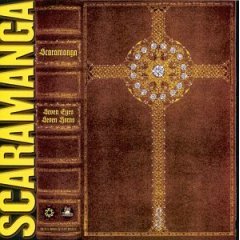


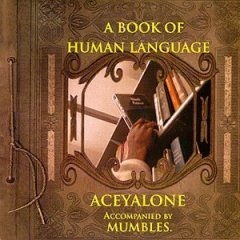

















































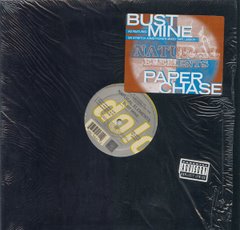








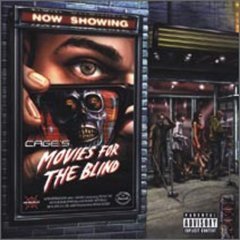














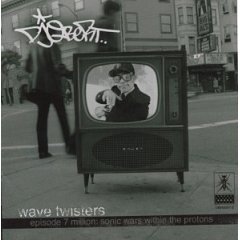



























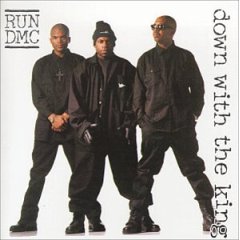












































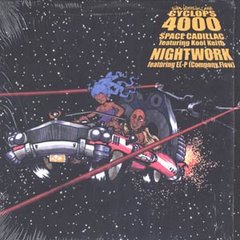


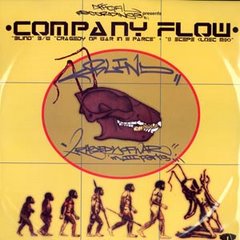


















2 comments:
Dragon's Lair and Space Ace were always two games I preferred to watch rather than play. I don't think I was too young to wrap my head around the fact that I would actually be in control of a cartoon, but that's just how I was back then. The games looked fucking beautiful, though.
Thanks for the blog love in your previous post, by the way. Wasn't able to write until today.
-Max
Remember Super Don Quixote? That was another LD game in the vein of Dragon's Lair that ruled. THe idea with that game was that once the game had played itself out they could replace the disc inside the cabinet to essentially make it a brand new game, and reuse the cabinet.
Also, the 30-35 cent era of comics was actually the late seventies, a little before the arcade craze. I started buying comics in 1980 and at that point they were already 50 cents apiece. Of course, now at 3+ bucks a pop the prices of comics seem to have well outpaced inflation. But rare was the video game that outpriced a comic.
Post a Comment